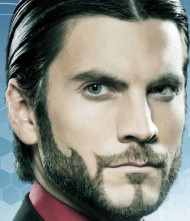I recently attended an author reading of a humorous supernatural fiction novel that shall remain nameless. After hearing several chapters from the beginning and middle, I found my self thinking, “The main character’s voice is hilarious, but the dude is a douche, a parasite who makes a living ruining other people’s lives; he never shows remorse for it, never justifies it, nor in fact does he ever give us the sense there is need for justification.
It brought up a question I have as a writer that is still not fully resolved. It is based on the assumption that a protagonist must be a sympathetic character. I used to think this meant the reader has to like the main character, or identify with her/him. A wise writer friend of mine suggested that we don’t have to like them, per se–nor particularly identify with them–but we do have to be able to sympathize with them, at least in some small way.
Breaking Bad
I suppose that’s why the protagonist of Breaking Bad was able to keep people with him for x seasons; he was despicable in many ways–more and more as the seasons passed–but viewers sympathized with his troubles and miseries. Likable? No. Sympathetic? Quite.
If I Laugh, Do I Sympathize?
Back to the supernatural novel. The only thing this protagonist had going was that he was funny as hell. His snarky voice made me chuckle. But sympathize? I don’t know.I suppose the roots of the word sympathy mean literally, “to feel with.” I guess if this unlikable protagonist is making jokes and I’m laughing, I’m sympathizing with him–literally “feeling humor with him.”
But that reasoning makes me dizzy and I still don’t feel I sympathized with him.
Not Funny Enough
So I bought the book based on the chuckles I got from the reading, but only read halfway through before I put it down. NOTE TO SELF: Turns out, funny isn’t enough to form that emotional attachment with a protagonist I need to want to spend a lot of time with them.
To be fair, the author seems to have cherry picked some of the funniest passages in the book to read to us, so maybe I lost sympathy simply because the rest just wasn’t funny enough. I was there for the cherry passages of hilarity, then…the ick showed through.
Until I meet another such character who is much funnier, I won’t know the answer.
Corollary Observation: The Comic Get-Out-of-Jail-Free-Card
A funny narrator can get away with much that would spoil a story with an ordinary narrator. for example, info dumps of exposition cause readers to skim ahead, or sigh and doggedly push through in hopes such dumps won’t come often.But I’ve read info-dumps that were so funny I didn’t care at all. My friend Craig has that knack. I could read his exposition all day.
So I remain undecided as to whether an unsympathetic protagonist can be similarly redeemed by being very, very funny.
If you know examples of characters that fit that bill, let me know! I’d love to hear your thoughts below.






